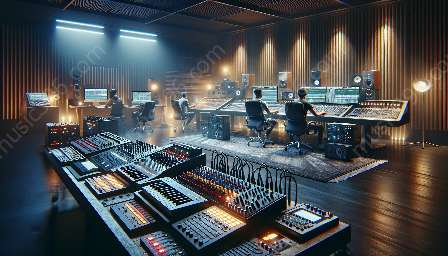When it comes to advanced mixing techniques and music technology, one crucial aspect that often gets overlooked is the importance of phase coherence. Phase coherence refers to the alignment of the phase relationship between the audio signals in a mix. It plays a significant role in determining the overall sound quality and cohesiveness of a mix, making it essential for any serious audio engineer or music producer to understand its significance.
The Impact of Phase Coherence
Phase coherence directly affects the clarity, focus, and definition of individual elements within a mix. When audio signals are in phase, they reinforce each other, resulting in a more powerful and impactful sound. On the other hand, when signals are out of phase, they can cancel each other out, causing a loss of energy and overall sonic imbalance. This is particularly noticeable in the low-frequency range, where phase issues can muddy the mix and reduce the impact of the bass and kick drum.
Advanced Mixing Techniques and Phase Coherence
Utilizing advanced mixing techniques involves addressing phase coherence to achieve a more professional and polished sound. By ensuring that signals are in phase and aligned properly, engineers can create a more transparent and defined mix with improved separation between individual elements. This allows for better control over the sonic landscape and contributes to a more immersive listening experience for the audience.
Strategies for Achieving Phase Coherence
There are several strategies and tools available to ensure phase coherence in a mix. One common approach is to use phase correlation meters or oscilloscopes to visually analyze the phase relationship between audio signals. Additionally, utilizing sample-accurate editing and aligning multi-miked sources can help avoid phase discrepancies. Furthermore, employing specialized phase correction plugins can be beneficial in resolving phase issues without compromising the integrity of the audio.
Understanding the Role of Music Technology
Music technology plays a pivotal role in addressing phase coherence issues. Digital audio workstations (DAWs) offer a range of tools and plugins designed to assist engineers in managing phase relationships effectively. These include time and phase alignment tools, as well as specialized EQ and phase correction plugins that can be used to correct phase issues without negatively impacting the overall sound quality.
Conclusion
Phase coherence is a critical factor in achieving professional-level mixes and leveraging advanced mixing techniques. Understanding its impact on sound quality and utilizing the appropriate tools and strategies is essential for any audio engineer or music producer looking to create compelling and cohesive mixes that captivate listeners. By prioritizing phase coherence, you can elevate the sonic integrity of your mixes and deliver a more immersive and impactful musical experience.

























